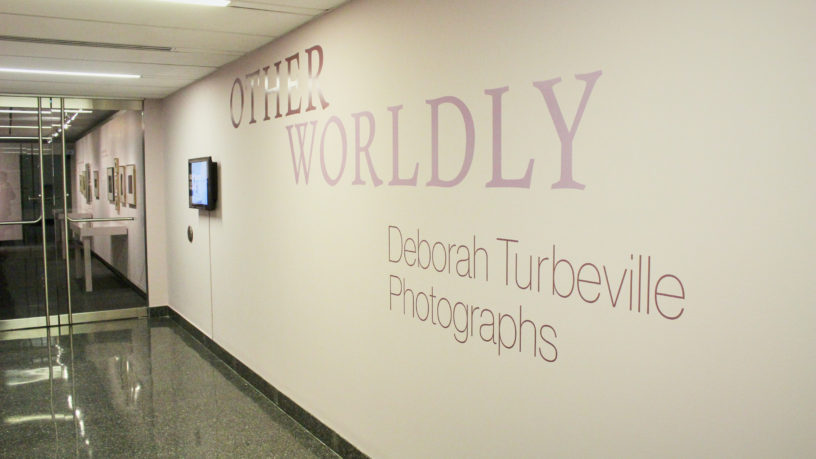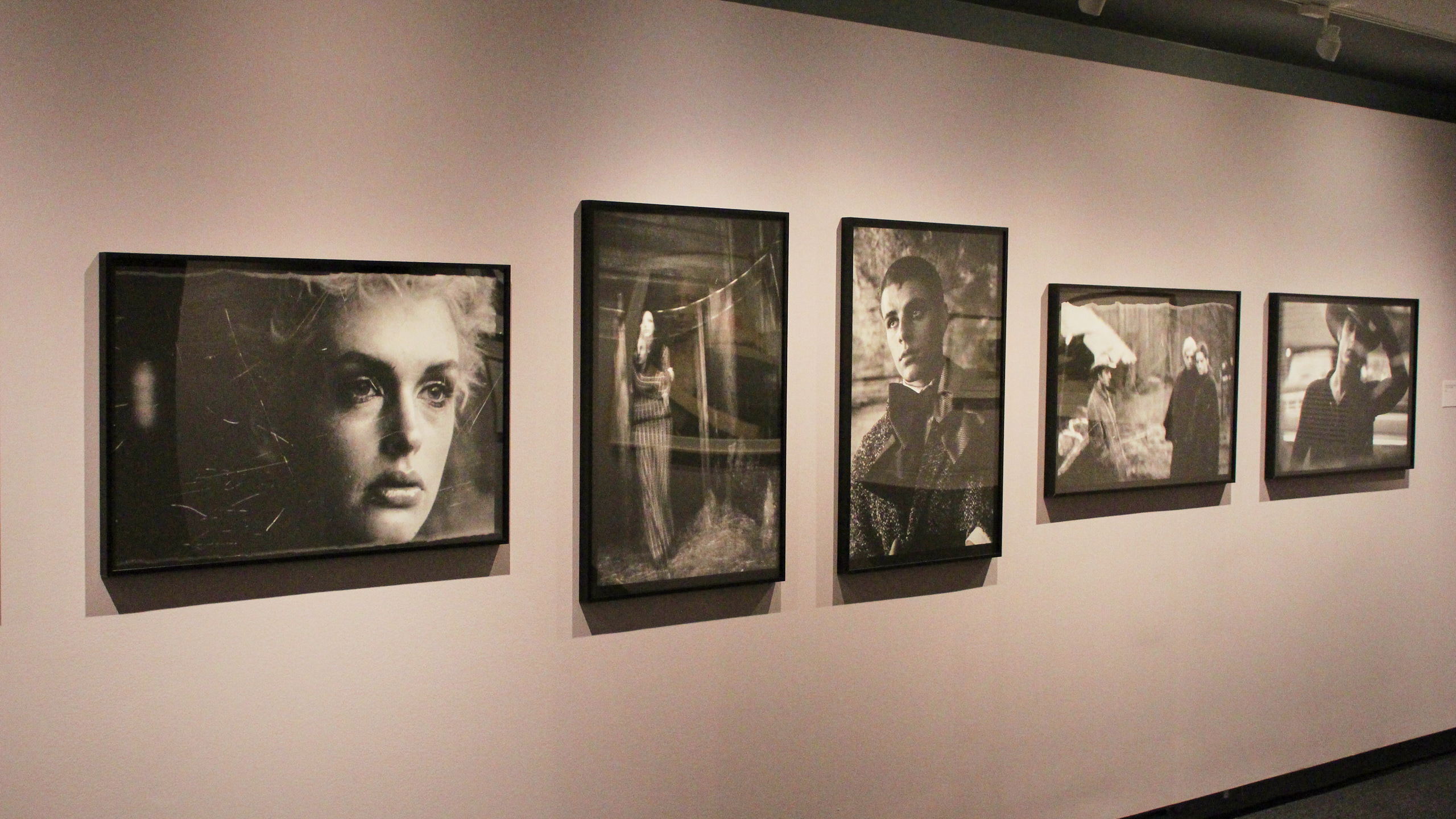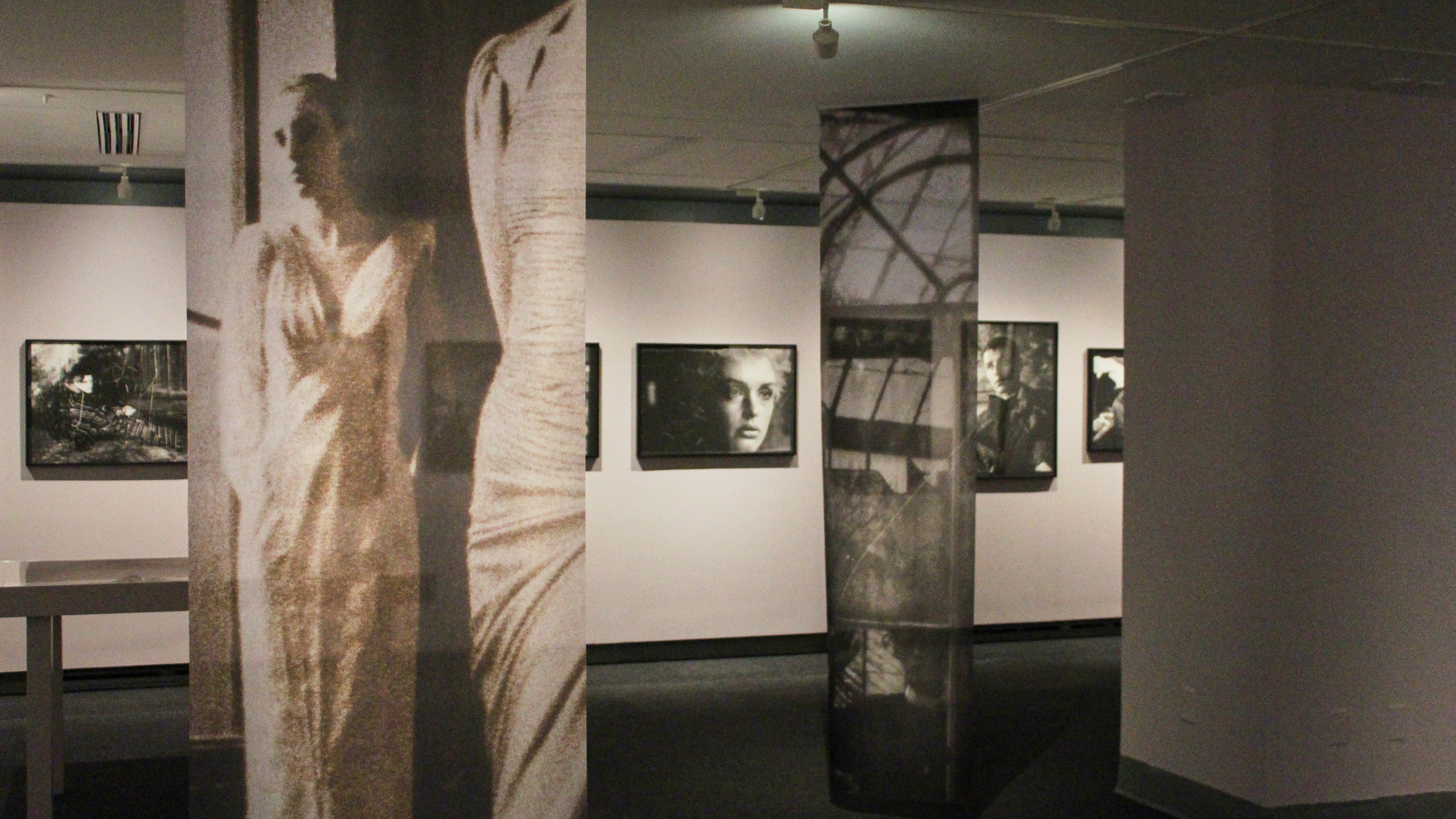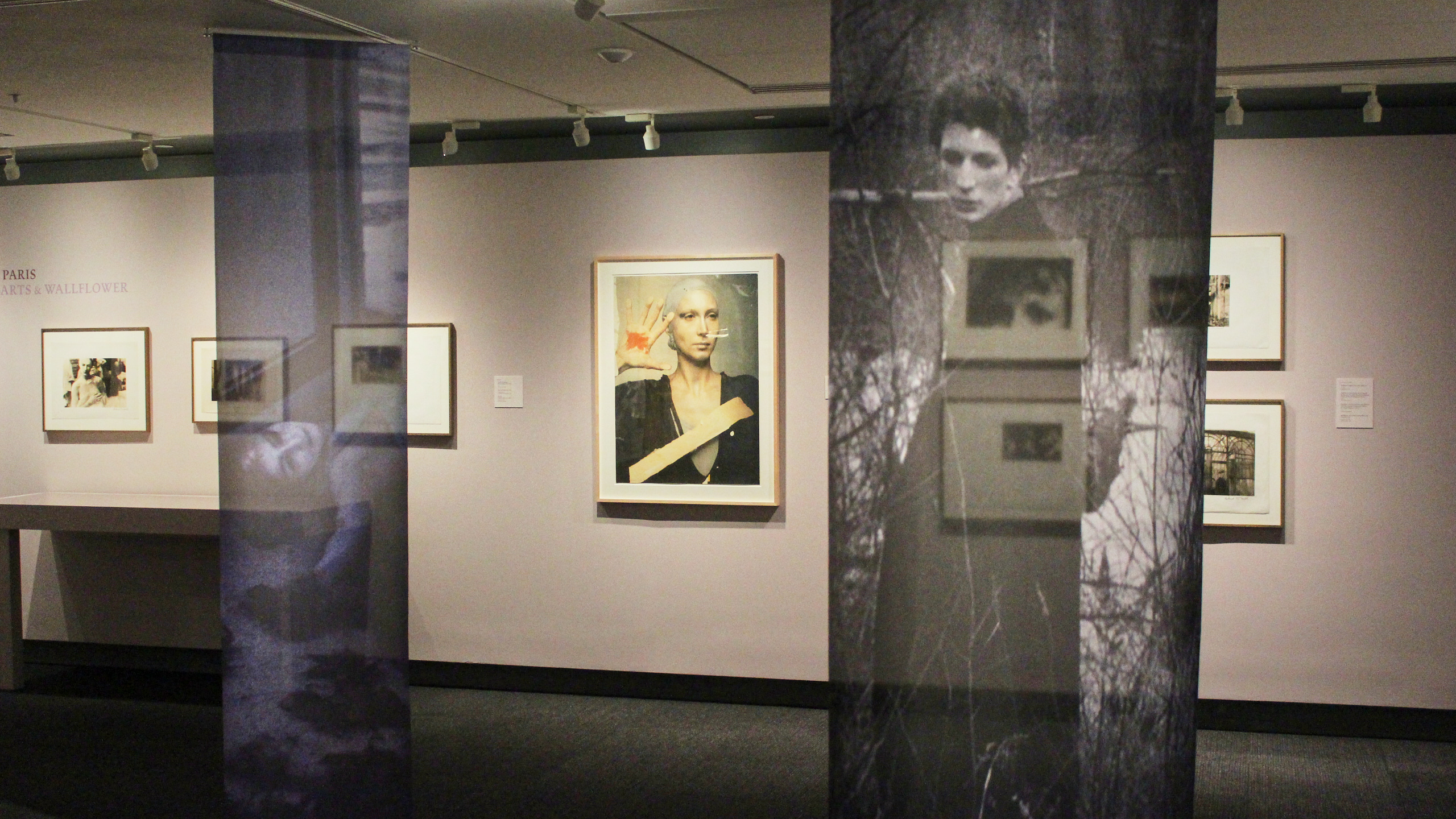By Jessica Kouki
One of the latest exhibitions at The Image Centre, Otherworldly: Deborah Turbeville Photographs is running now until April 6.
Turbeville was an American fashion photographer who significantly influenced the fashion photography industry, according to Denise Birkhofer, The Image Centre’s collections curator and the curator of Otherworldly.
The photographs in the exhibition have a broad appeal to audiences—whether they be fashion consumers, photographers or avid magazine readers. It pulls from the Centre’s 60-piece collection of Turbeville’s work and displays about 40 pieces around the room in various settings of wall framing, photo negatives on shelves and fabric-printed photos hanging from the ceiling.
The pieces are from the 1970s to the ’90s and showcase Turbeville’s signature style of combining fashion photography and documentary photography.
Khushdip Nijjar, a fifth-year Toronto Metropolitan University (TMU) computer science student, visited the exhibition as part of an assignment for her elective course—Visual Communication: A Critical Approach. The assignment required her to choose one of the exhibitions at The Image Centre. As someone not majoring in the arts, she was drawn toward the aesthetically pleasing pieces of Turbeville’s work. “It stood out to my eyes.”
“[It] is challenging us to think about what a fashion image can be and a woman who was really a trailblazer in that medium at that time”
With quiet music playing in the background and the lights dimmed, the exhibition provides a calm ambience for patrons. Despite its small size, the exhibit felt spacious, creating a sense of being transported into a vintage magazine for the audience.
The photographs display Turbeville’s unique ability to turn commercial fashion photography into art, giving it a dream-like aesthetic. Through various techniques such as soft focus, collages and methods like tearing paper and scratching photos with razor blades, Turbeville’s work spanned many different styles. Her constant reinvention is clear throughout the three-decade-spanning collection.
Fourth-year image arts: photography studies student Milyn Pham says that seeing viewers react to an artist’s work in person doesn’t compare to posting photos online.
Pham finds Turbeville’s variety and unique imagery to be very beautiful as it combines fashion with fine art.
“She has an interesting way of posing and staging her photographs in a way where it seems like a candid moment,” she said. “I would like to see more photos like Deborah’s in this age of digital photography.”
As a photographer herself, Pham understands the importance of exhibiting photos for others to see.
“For physical artwork, it becomes more valuable when the images are exclusive to an event,” she explained.
Birkhofer took into consideration the world Turbeville had created within her work and, in turn, created a unique experience for those visiting the exhibit.
“We sought to create an environment through our design choices that would complement the aesthetic of her photographs, meaning a space that feels somewhat ethereal and more atmospheric than your normal white contemporary gallery space,” Birkhofer explained.
She says the exhibition has a wide appeal within the TMU community through the intersection of fashion and photography, drawing a diverse crowd to see Turbeville’s works.
“I’ve heard comments from a lot of people who are really excited to see her work,” Birkhofer said. “She is a known quantity within the fashion world, so we’ve had a lot of interest from colleagues in the fashion department here.”
Eve Townsend, director of TMU’s Fashion Research Collection and lecturer at the School of Fashion, was very excited by the Turbeville display. Last month she and Birkhofer jointly led a tour of the exhibition.
Townsend recognizes that much of Turbeville’s photography is still primarily confined to the Western beauty standards of the ’70s and ’80s. She explains the lack of diversity in the races and body sizes of models represented in Turbeville’s works is a reflection of the industry at the time, though she doesn’t excuse it.
“In this exhibition primarily, we’re looking at tall, thin white women and very Eurocentric, so that speaks to the time in which these photographs were made.”
Despite this, Turbeville was in many ways very progressive for her time, both within the fashion photography scene and socially.
“She is sort of combining commercial fashion with also some historical props as well—and a lot of those props have been used for decades and even centuries in subversive self-fashioning,” Townsend explained. “The use of makeup on men…I think there’s an interesting way to read these photographs through a Queer lens as well.”
Townsend went on to explain that lens can be used to examine the series of Turbeville’s photos taken in bathhouses—spaces that have historically been tied to the Queer community.
As a lecturer, Townsend hopes to educate the next generation of designers and fashion journalists to change how we see the fashion industry.
“We’re very conscious of developing critical thinkers and changemakers and thinking about how we change an industry that has been historically highly problematic.”
Ultimately, both Townsend and Birkhofer hope TMU students come away from the exhibition having gained new perspectives into Turbeville’s legacy.
“In general, this exhibition is, I think, a really strong showing,” said Townsend. “[It] is challenging us to think about what a fashion image can be and a woman who was really a trailblazer in that medium at that time.”
With files from The Eyeopener.














Leave a Reply